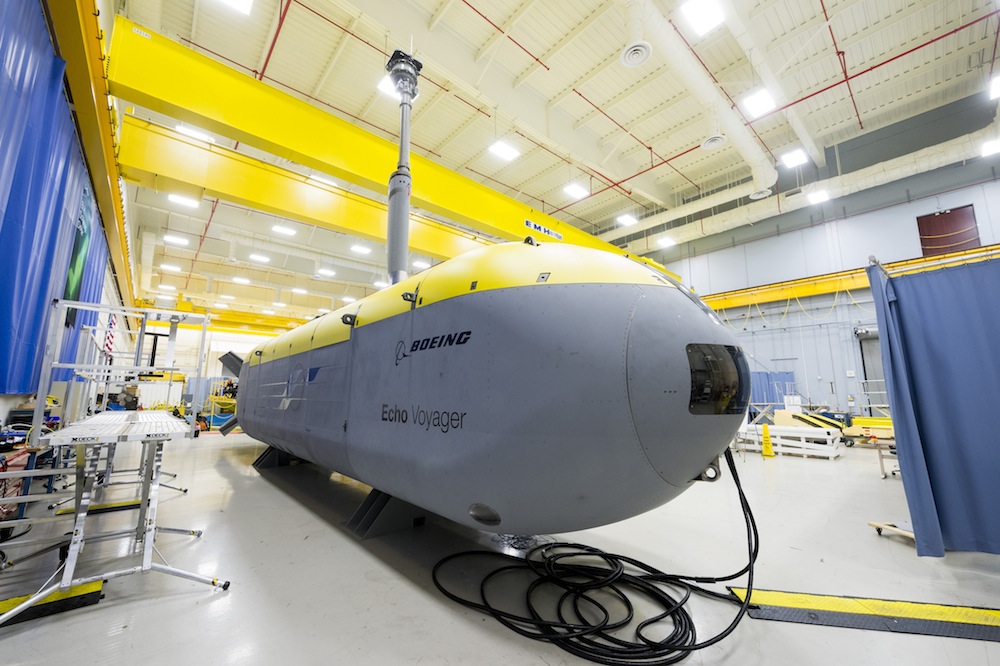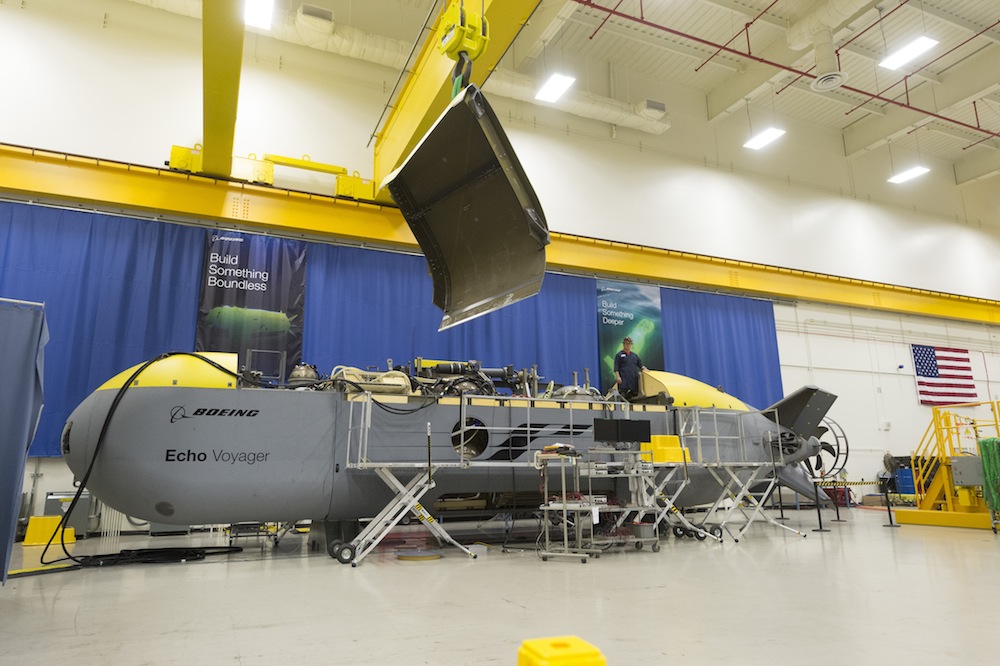Massive Robotic Sub Can Carry Out Months-Long Underwater Missions

A new unmanned robotic submersible designed by aerospace giant Boeing can operate autonomously underwater for months at a time, according to company representatives.
The 51-foot-long (15.5 meters), bullet-shaped Echo Voyager was unveiled earlier this month, and is Boeing's latest unmanned undersea vehicle. The Echo Voyager is designed to explore the deep sea, and the vehicle's new hybrid rechargeable power system allows it to operate for months underwater without needing to stop for fuel.
The massive robotic sub can also be launched and recovered without help from support ships, according to Boeing. [In Photos: The Wonders of the Deep Sea]

"Echo Voyager can collect data while at sea, rise to the surface and provide information back to users in a near-real-time environment," Lance Towers, director of Boeing Phantom Works' Sea & Land division, said in a statement. "Existing [unmanned undersea vehicles] require a surface ship and crew for day-to-day operations. Echo Voyager eliminates that need and associated costs."
Boeing has designed and operated both manned and unmanned submersibles since the 1960s. The company's existing fleet of unmanned undersea vehicles includes the 32-foot-long (9.7 m) Echo Seeker and the 18-foot-long (5.5 m) Echo Ranger, both of which can operate underwater for a few days at a time.
With the ability to carry out months-long missions, the Echo Voyager could be used for a range of deep-sea operations, according to Boeing.
"Echo Voyager is a new approach to how unmanned undersea vehicles will operate and be used in the future," Darryl Davis, president of Boeing Phantom Works, said in a statement.
Sign up for the Live Science daily newsletter now
Get the world’s most fascinating discoveries delivered straight to your inbox.
The Echo Voyager will undergo sea trials this summer off the California coast, Boeing said.
Follow Denise Chow on Twitter @denisechow. Follow Live Science @livescience, Facebook & Google+. Original article on Live Science.

Denise Chow was the assistant managing editor at Live Science before moving to NBC News as a science reporter, where she focuses on general science and climate change. Before joining the Live Science team in 2013, she spent two years as a staff writer for Space.com, writing about rocket launches and covering NASA's final three space shuttle missions. A Canadian transplant, Denise has a bachelor's degree from the University of Toronto, and a master's degree in journalism from New York University.









